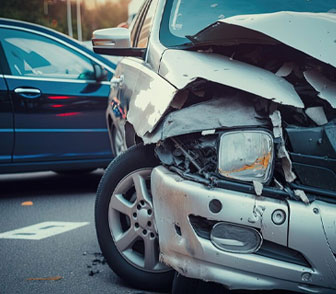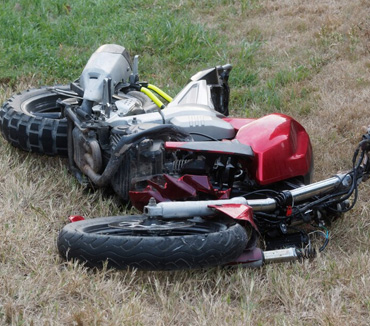How Negligence Works in Personal Injury
Negligence is a legal theory that must be proved before you can hold a person or company legally responsible for the harm you suffered. Nearly all personal injury claims are based on the fact that one party was negligent. However, there are different types of negligence involved in each personal injury claim. These contribute both to who might be held liable for damages resulting from a personal injury accident, as well as the degree of liability a person may face.
Simply put, negligence is a failure to behave with the level of care that someone of ordinary prudence would have exercised under the same circumstances. Proving negligence is required in most claims from accidents or injuries, such as car accidents or “slip and fall” cases. Negligence claims must prove four things in court: duty, breach, causation, and damages/harm.
If you are pursuing a personal injury claim, it is important that you understand the basics about how negligence works, the different types of negligence, and how to prove negligence in a personal injury claim.
What Is Negligence?
Negligence refers to the failure to act with the level of caution or care expected from a person of ordinary prudence. An act of negligence may amount to a situation where an individual acts carelessly. From a legal perspective, the act of negligence must result in injuries or damage to another person’s property for a claim to be binding.
The negligent behavior may include actions and omissions where there was an assumed duty or act of care. Ideally, the concept of negligence exists on the premise that there is an expectation on people to exercise reasonable care in all their actions. The assumption is that people should always take account of the probable harm their actions or inactions may cause on people or property before acting.
Types of Negligence
A person can be negligent in many different ways such as:
- Gross Negligence: Gross negligence means more than carelessness. It means willfully disregarding the results to others that might follow from an act or failure to act. In order to find that the defendant was grossly negligent, you must find each of the following three things beyond a reasonable doubt. First, that the defendant knew of the danger to another… they knew there was a situation that required to take ordinary care to avoid injuring another. Second, that the defendant could have avoided injuring another by using ordinary care. Third, that the defendant failed to use ordinary care to prevent injuring another when, to a reasonable person, it must have been apparent that the result was likely to be serious injury.
- Comparative Negligence: This is another defense where the defendant tries to decrease the amount owed the plaintiff. The defendant will claim the plaintiff contributed to the accident. Their action or inaction showed decrease their award by a percent. The plaintiff will still get paid, but a lesser amount.
- Contributory Negligence: Contributory negligence is, arguably, the most dated theory of negligence, as well as the most rigid. In a contributory negligence jurisdiction, if the plaintiff is found by a jury to be the least bit negligent, then he or she will be barred from recovery entirely. There are only four states ─ Alabama, Virginia, North Carolina, and Maryland ─ and Washington, D.C., that follow the pure contributory negligence rule.
Elements of Negligence
The legal concept of negligence can be hard to understand because it is not just mere carelessness.
In order to successfully prove a defendant was negligent and should thus be held liable under the eyes of the law, there are four elements of negligence that a plaintiff must prove. Here’s what they are.
1. Duty of Care
When assessing a negligence claim, the first step is to look to see whether or not the defendant owed the plaintiff a legal duty of care. In some circumstances, the relationship between the plaintiff and defendant might create a legal duty. People and businesses have an obligation to exhibit a reasonable degree of caution and prudence when engaging in actions that could affect others.
In most cases, the defendant is obliged to exercise reasonable care. This means they must show the same level of care an average person would have exhibited under the circumstances. A driver, for example, must be reasonably prudent on the road in order to avoid causing harm to others.
2. Breach of Duty
It is not enough for a person to prove that another person owed them a duty. The personal injury lawyer must also prove that the negligent party breached their duty to the other person. A defendant breaches such a duty by failing to exercise reasonable care. The issue of whether a defendant breached a duty of care is decided by a jury as a question of fact.
3. Causation
The third element requires that the plaintiff show that the defendant’s negligence actually caused his or her injury. Someone might be acting negligently, but the plaintiff can only recover if this negligence somehow causes the injury.
If a person fails to behave prudently but it does not cause harm, then this will not result in a successful personal injury claim arising from negligence. The defendant’s failure must have been the direct cause of damage to a plaintiff in order for the defendant to be legally liable for negligence.
4. Proximate Cause of Harm
Proximate cause relates to the scope of a defendant’s responsibility in a negligence case. A defendant in a negligence case is only responsible for those harms that the defendant could have foreseen through their actions. If a defendant has caused damages that are outside of the scope of the risks that the defendant could have foreseen, then the plaintiff cannot prove that the defendant’s actions were the proximate cause of the plaintiff’s damages.
5. Damages and Harm
The final element of a negligence case is “damages.” This element requires that the court be able to compensate the plaintiff for his or her injury. This usually takes the form of monetary compensation for expenses such as medical care or property repair. The plaintiff must show that his or her injuries warrant payment accordingly.
Should You Speak with an Attorney?
Our legal team at Duque Law Group is comprised of award-winning and nationally recognized trial lawyers who collaborate with nurses, doctors and medical experts regularly. Though we understand the nature of injuries, we are not physicians, and always encourage victims to seek treatment as soon after an accident as possible, and to follow up and heed their doctors’ advice.
Call us now at 1-877-241-9554 to learn more about your options. A free consultation is just a phone call away.
Request A
Free Consultation
Fields Marked With An ” *” Are Required










